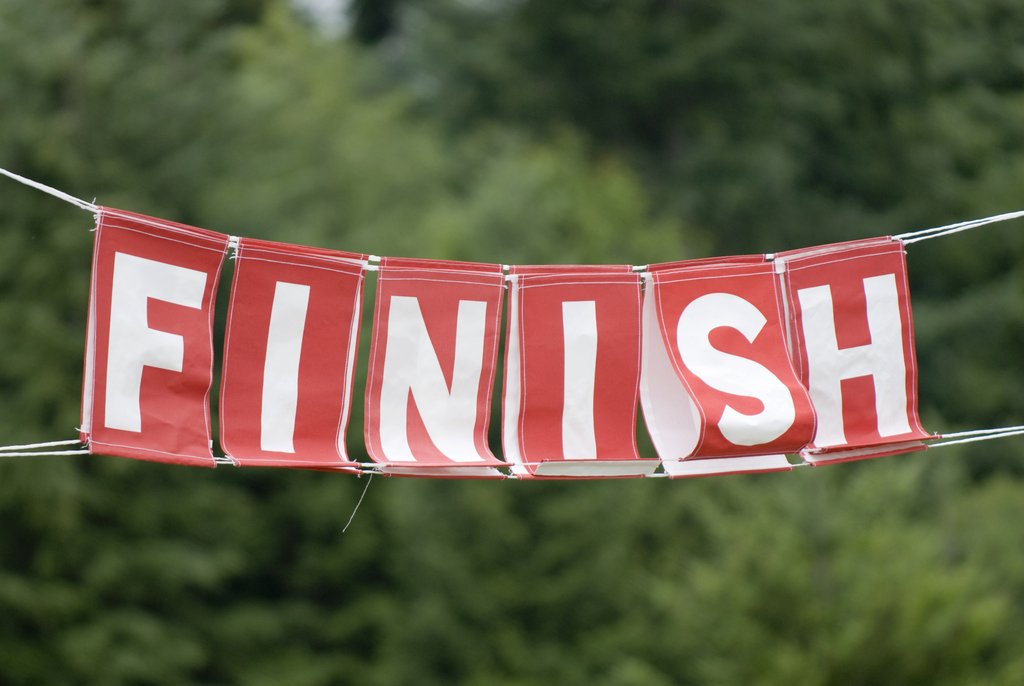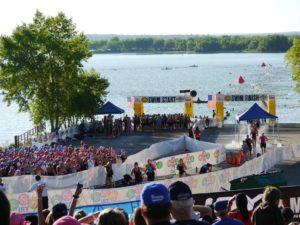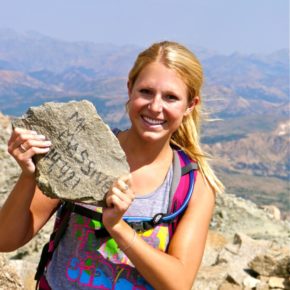Screaming muscles, burning sun, insatiable thirst, and competitive excitement culminated at Sunday’s Tri for the Cure. This sprint distance triathlon brings women from all walks of life together to compete, challenge themselves, and raise money for breast cancer research. Though an avid swimmer since I could walk, I quit after my senior year of high school and took plenty of time away from the pool due to shoulder injuries. Once I was finally able to get back in the pool, the idea of a triathlon rekindled my competitive spirit and posed the perfect challenge for me to lose the last remaining poundage from my study abroad trip to Ireland last fall.
With the camaraderie of my fellow wannabe triathlete, Emily, I began training at the beginning of the summer. My training consisted of working out 40-90 minutes about six days a week, combining plenty of biking, swimming, and running. In the last couple weeks leading up to the event, I practiced transitions by swimming the race length of 750 meters in the afternoon and biking or running a 5K in the evening. To keep it interesting, I switched my workouts up by incorporating spinning classes and yoga into the mix to increase my endurance and stretch out sore muscles.
Marking the August 5th race on my calendar served as a great motivator. On the days I felt like plopping down on the couch with a snack and the TV on after work, I pictured myself crossing the finish line in a two-piece swimsuit and shorts. The image of a soft tummy and fifty-year-olds smoking me in the finish was enough for me to promptly remove myself from the cushions and head to the gym. During the two months between my registration and the actual event itself, I shed almost ten pounds, spurring me to work harder every training session.
The night before our event, Emily’s mom made us a delicious, carbo-loading feast complete with lasagna and garlic bread. Many endurance athletes utilize carbo-loading to store up energy for races lasting longer than an hour. In the few days leading up to an event, athletes typically increase carbohydrate intake to about 70% of their calories in order to store up energy and prevent depleting their glycogen stores during long races. This technique not only assists with preparation for top performance, but as an excuse to guiltlessly gorge on pasta. The evening ended with a good stretch session and early bedtime as we mentally prepped ourselves for the morning.
On Sunday, we woke at 0-dark-30 and made our way to the transition area just as the sun decided to stretch its fingertips through the horizon at 5:30 a.m. We laid out our gear, carefully placing bike shoes, helmets, and shorts in one grouping, running shoes in another. Many novice triathletes lose time in transitions as they fumble with the quick change between swimming and biking, biking and running. By organizing gear in neat rows that allow you to simply step right in to the next leg of the race, you can save valuable time.
Our nerves eased while we chatted with the women around us during the wait for the start. For many, this was their first triathlon. The reasons for racing in Tri for the Cure ranged over a wide spectrum. For me, the desire to get back into shape and compete again drove me to sign up. Seeing many of my friends’ mothers battle breast cancer through the years gave me the courage to continue in the race. One of the heats of the tri is devoted completely to survivors. Many women don funny hats or even pink tutus to celebrate themselves and their loved ones who survived the disease. Others carefully penned the names of loved ones on their arms, legs, backs, and t-shirts in honor of those who lost the fight but gifted them the strength to compete.
Tri for the Cure is known for being a fun, supportive race,
And this year’s event did not disappoint. Even when passing ladies on the bike and run, winded cheers of encouragement and “You go girl!” propelled me onward. The actual swim, bike, and run remain a blur, but there were many moments where I found my body battling my mind. The bike to run transition is the most difficult for me, and my legs felt as through they were at least 100 pounds heavier as I struggled to pick them up and maintain a runner’s stride. After recalling just about every cliché I knew, I powered through those tough hills and final miles to cross the finish line in just over an hour and 21 minutes.
The cheering, supportive, and competitive environment, combined with celebrating a finish with my best friend (and a beer at 9:30 in the morning) rendered this race one to remember. Women of all ages and abilities convened around the finish at the post party, gulping water and devouring snacks as they shared a sense of great accomplishment. Our faces split with smiles as our pink-ribboned finishers’ medals swung around our necks. The image of the gold medallions glinting in the sunlight inspires me to never stop this journey of health and strength. What will motivate you to get out there and move?
Avery Johnson is a 303 Magazine intern. She is a Colorado native currently majoring in English and Communication Studies at the University of San Diego. When she isn’t writing, she’s all about gettin’ active outside or baking up a storm. She rarely leaves the house without a good book. Click here to follow her blog.






